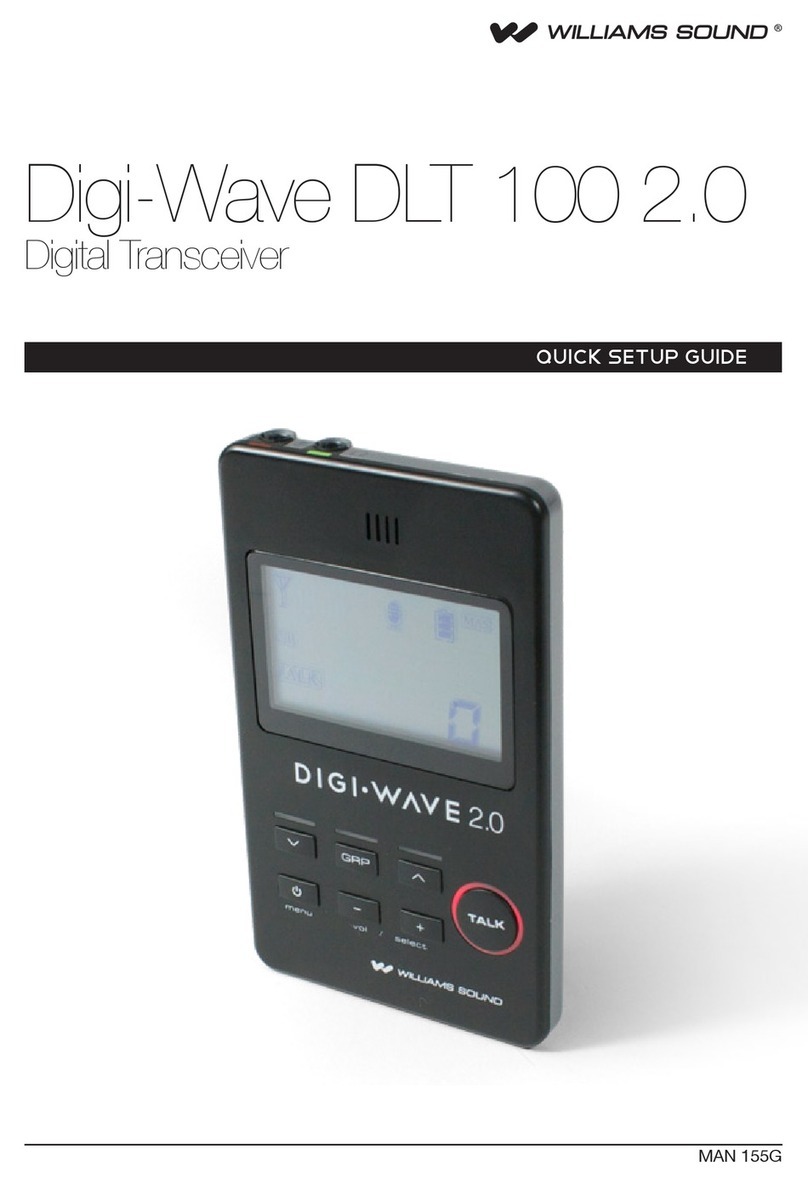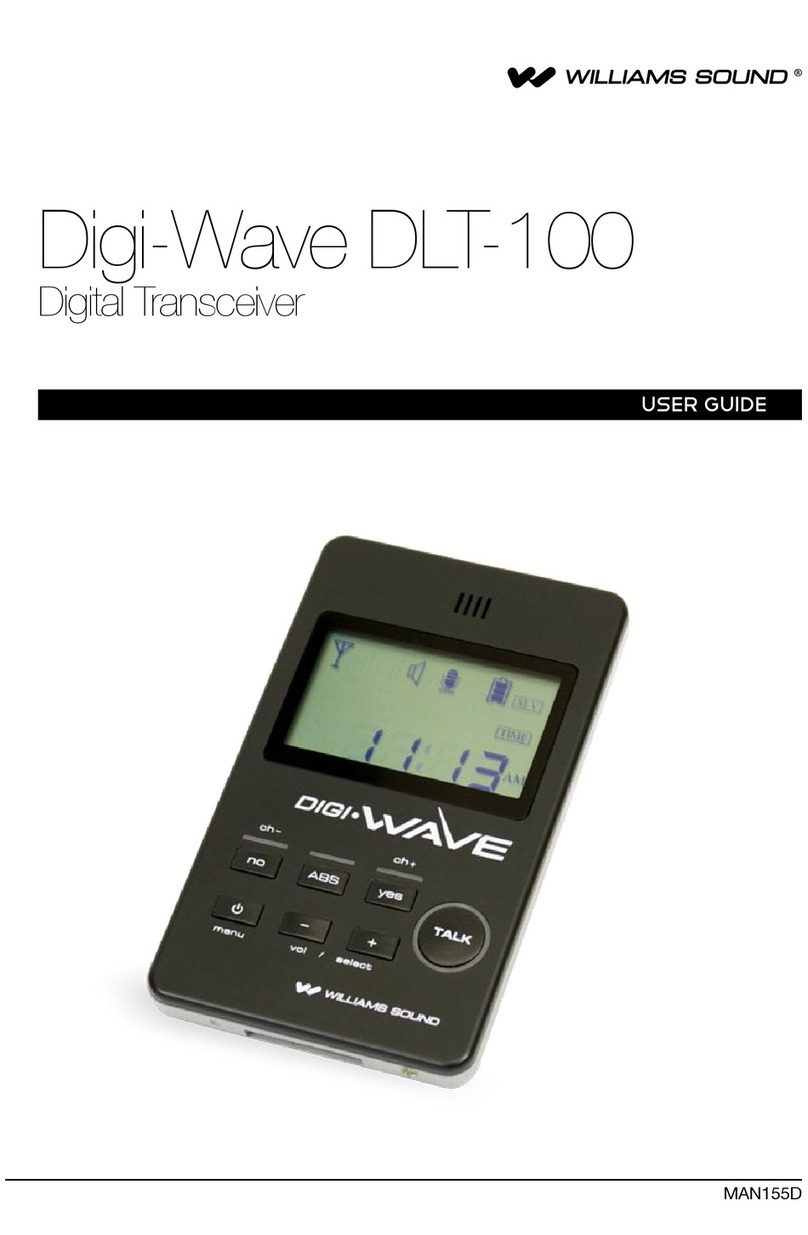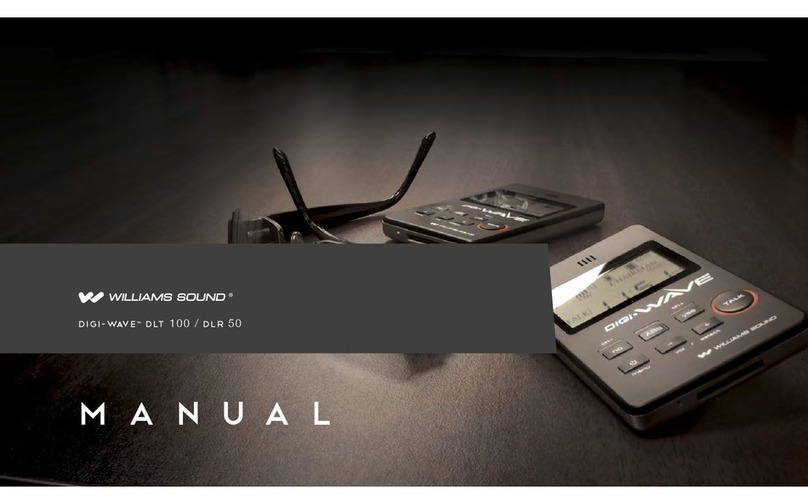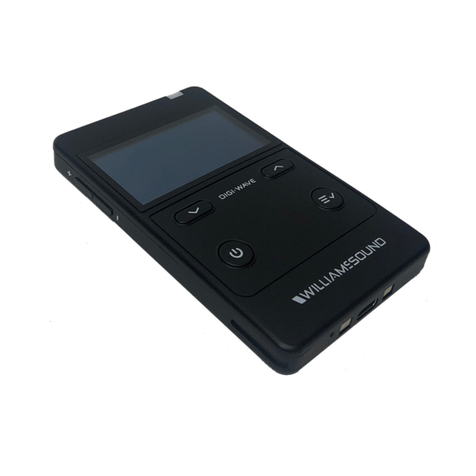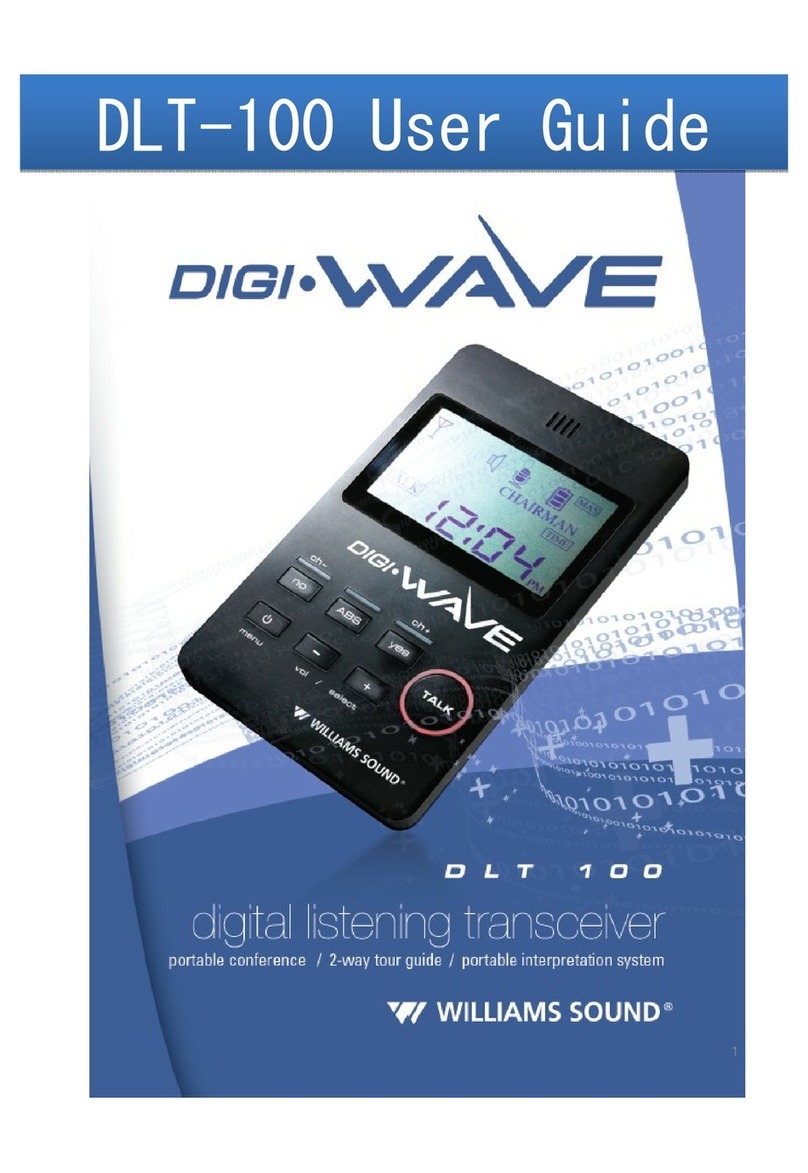
DLT 100 2.0 Digital Transceiver and DLR 60 2.0 Digital Receiver
2
Contents
Digi-Wave™ ............................................................................................................................................................................ 2
DLT 100 2.0 Digital Transceiver and DLR 60 2.0 Digital Receiver ..................................................................................... 2
Safety Information ................................................................................................................................................................... 3
Recycling Instructions ...................................................................................................................................................... 3
System Overview..................................................................................................................................................................... 4
Getting Started: Preprogrammed Systems .............................................................................................................................. 5
Before Programming the Digi-Wave™ System......................................................................................................................... 6
Programming the Digi-Wave™ System for 2-way Mode .......................................................................................................... 8
Programming the Digi-Wave™ System for 1-way Mode(s)....................................................................................................... 9
Programming the Digi-Wave™ System: DLT 100 2.0 Optional Settings ................................................................................. 10
DLT 100 2.0 Controls ............................................................................................................................................................ 12
DLT 100 2.0 Operation .......................................................................................................................................................... 12
Button Functions............................................................................................................................................................ 12
DLR 60 2.0 Controls.............................................................................................................................................................. 14
DLR 60 2.0 Operation ........................................................................................................................................................... 14
Example 1: 2-way Mode, Tour Guide.................................................................................................................................... 15
How it works.................................................................................................................................................................. 15
Example 1: 2-way Mode, Tour Guide (continued).................................................................................................................. 16
How it works (CONTINUED) ........................................................................................................................................... 16
2-Way Setup for Tour Guide Operation .................................................................................................................................. 17
2-WAY MODES............................................................................................................................................................. 17
2-Way Setup for Tour Guide Operation (continued)................................................................................................................ 18
Example 2: Simultaneous Interpretation (1-way) .................................................................................................................... 19
How it works.................................................................................................................................................................. 19
1-way Setup for Simultaneous Interpretation ......................................................................................................................... 20
1-WAY MODES............................................................................................................................................................. 20
1-way Setup for Simultaneous Interpretation ......................................................................................................................... 21
IMPORTANT .................................................................................................................................................................. 21
Repeater Mode ..................................................................................................................................................................... 22
Dierences between DLT 100 2.0 and DLT 100 ..................................................................................................................... 23
Dierences between DLR 60 2.0 and DLR 60 ....................................................................................................................... 24
Dierences between DLT 100 and DLT 100 2.0 rmware versions ......................................................................................... 24
Specications........................................................................................................................................................................ 25
DLT 100 2.0 Transceiver................................................................................................................................................. 25
Specications........................................................................................................................................................................ 26
Digi-Wave™
DLT 100 2.0 DIGITAL TRANSCEIVER AND DLR 60 2.0 DIGITAL RECEIVER
